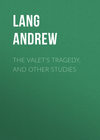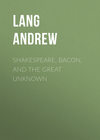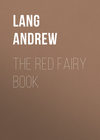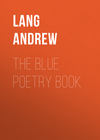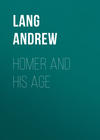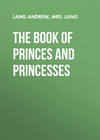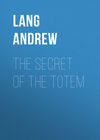Read the book: «Historical Mysteries», page 5
The point where, according to the prosecution, the evidence 'pinched' James of the Glens was his attempt to raise money on May 14. What could he want with so large a sum as 8l., so suddenly, as he had no bill to meet? Well, as a number of his friends were to be thrown out of their farms, with their cattle, next day, James might need money for their relief, and it seems certain that he had made no effort to raise money at the moment when he inevitably must have done so, if guilty, that is, on May 12, immediately after concerting, as was alleged, the plot with Allan Breck. Failing to get money from William Stewart at Fort William on May 14, James did on May 15 procure a small sum from him or his wife, and did send what he could scrape together to Allan Breck at Coalisnacoan. This did not necessarily imply guilt on James's part. Allan, whether guilty or not, was in danger as a suspected man and a deserter; James was his father's friend, had been his guardian, and so, in honour, was bound to help him.
But how did he know where Allan was to be found? If both were guilty they would have arranged, on May 11, a place where Allan might lurk. If they did arrange that, both were guilty. But Donald Stewart, who went, as we have said, and saw Allan on the hillside on the night of the murder, added to his evidence that Allan had then told him to tell James of the Glens where he might be found, that is, at Coalisnacoan. These tidings Donald gave to James on the morning of May 15. James then sent a pedlar, Allan's cousin, back to William Stewart, got 3l., added, in the evening of the 16th, more money of his own, and sent it to Allan. There was a slight discrepancy between the story of the maid, Kate MacInnes, and that of Donald Stewart, as to what exactly passed between them, concerning Allan, on the night of the murder, and whether Allan did or did not give her a definite message to Donald. The prosecution insisted on this discrepancy, which really, as James's advocate told the jury, rather went to prove their want of collusion in the manufacture of testimony. Had their memories been absolutely coincident, we might suspect collusion – that they had been 'coached' in their parts. But a discrepancy of absolutely no importance rather suggests independent and honest testimony. If this be so, Allan and James had arranged no trysting-place on May 11, as they must have done if Allan was to murder Glenure, and James was to send him money for his escape.
But there was a discrepancy of evidence as to the hour when the pedlar sent by James to Fort William on May 15 arrived there. Was he despatched after the hour when Donald Stewart swore that he gave Allan's message to James of the Glens, or earlier, with no knowledge on James's part of the message carried by Donald? We really cannot expect certainty of memory, after five months, as to hours of the clock. Also James did not prove that he sent a message to Allan at Coalisnacoan, bidding him draw on William Stewart for money; yet on Friday, May 15, James did, by the pedlar, bid William Stewart give Allan credit, and on Saturday, May 16, Allan did make a pen from a bird's feather, and ink with powder and water, and write a letter for money, on the strength of James's credit, to William Stewart. This is certainly a difficulty for James, since he suggested John Breck MacColl, a tenant of Appin's at Coalisnacoan, for the intermediary between Allan and William Stewart, and Allan actually did employ this man to carry his letter. But Allan knew this tenant well, as did James, and there was nobody else at that desolate spot, Coalisnacoan, whom Allan could employ. So lonely is the country that a few years ago a gentleman of my acquaintance, climbing a rocky cliff, found the bones of a man gnawed by foxes and eagles; a man who never had been missed or inquired after. Remains of pencils and leather shoe strings among the bones proved that the man had been a pedlar, like James Stewart's messenger, who had fallen over the precipice in trying to cross from Coalisnacoan to the road through Glencoe. But he never was missed, nor is the date of his death known to this day.
The evidence of the lonely tenant at Coalisnacoan, as to his interviews with Allan, is familiar to readers of Kidnapped. The tenant had heard of the murder before he saw Allan. Two poor women, who came up from Glencoe, told the story, saying that 'two men were seen going from the spot where Glenure was killed, and that Allan Breck was one of them.' Thus early does the mysterious figure of the other man haunt the evidence. The tenant's testimony was not regarded as trustworthy by the Stewart party; it tended to prove that Allan expected a change of clothes and money to be sent to him, and he also wrote the letter (with a wood-pigeon's quill, and powder and water) to William Stewart, asking for money. But Allan might do all this relying on his own message sent by Donald Stewart, on the night of the murder, to James of the Glens, and knowing, as he must have done, that William Stewart was James's agent in his large financial operations.
On the whole, then, the evidence, even where it 'pinches' James most, is by no means conclusive proof that on May 11 he had planned the murder with Allan. If so, he must have begun to try to raise money before the very day of the murder. James and his son were arrested on May 16, and taken to Fort William; scores of other persons were arrested, and the Campbells, to avenge Glenure, made the most minute examinations of hundreds of people. Meanwhile Allan, having got 5l. and his French clothes by the agency of his cousin the pedlar, decamped from Coalisnacoan in the night, and marched across country to the house of an uncle in Rannoch. Thence he escaped to France, where he was seen in Paris by an informant of Sir Walter Scott's in the dawn of the French Revolution; a tall, thin, quiet old man, wearing the cross of St. Louis, and looking on at a revolutionary procession.
The activities of the Campbells are narrated in their numerous unpublished letters. We learn from a nephew of Glenure's that he had been 'several days ago forewarned,' by whom we cannot guess; tradition tells, as I have said, that he feared danger only in Lochiel's country, Lochaber, and thought himself safe in Appin. The warning, then, probably came from a Cameron in Lochaber, not from a Stewart in Appin. In coincidence with this is a dark anonymous blackmailing letter to Fassifern, as if he had urged the writer to do the deed:
'You will remember what you proposed on the night that Culchena was buried, betwixt the hill and Culchena. I cannot deny but that I had breathing' (a whisper), 'and not only that, but proposal of the same to myself to do. Therefore you must excuse me, when it comes to the push, for telling the thing that happened betwixt you and me that night… If you do not take this to heart, you may let it go as you will.' (June 6, 1752.)
Fassifern, who had no hand in the murder, 'let it go,' and probably handed the blackmailer's letter over to the Campbells. Later, – , – of – , the blackest villain in the country, offered to the Government to accuse Fassifern of the murder. The writer of the anonymous letter to Fassifern is styled 'Blarmachfildich,' or 'Blarmackfildoch,' in the correspondence. I think he was a Mr. Millar, employed by Fassifern to agitate against Glenure.
In the beginning of July a man, suspected of being Allan, was arrested at Annan on the Border, by a sergeant of the Royal Welsh Fusiliers. He really seems to have changed clothes with Allan; at least he wore gay French clothes like Allan's, but he was not that hero. Young Ballachulish, at this time, knew that Allan was already across the sea. Various guesses occur as to who the other man was; for example, a son of James of the Glens was suspected, so there was another man.
The 'precognitions,' or private examinations of witnesses before the trial, extended to more than seven hundred persons. It was matter of complaint by the Stewart party that 'James Drummond's name appeared in the list of witnesses;' this is Mr. Stevenson's James More, really MacGregor, the son of Rob Roy, and father of Catriona, later Mrs. David Balfour of Shaws, in Kidnapped and Catriona. 'James More's character is reflected upon, and I believe he cannot be called worse than he deserves,' says one of the Campbells. He alleges, however, that in April, before the murder, James of the Glens visited James More, then a prisoner in Edinburgh Castle, 'caressed him,' and had a private conversation with him. The abject James More averred that, in this conversation, James of the Glens proposed that James More's brother, Robin Oig, should kill Glenure for money. James More was not examined at the trial of James of the Glens, perhaps because he had already escaped, thanks to Catriona and collusion; but his evidence appears to have reached the jury, almost all of them Campbells, who sat at Inveraray, the Duke of Argyll on the bench, and made no difficulty about finding James of the Glens 'Guilty.' To be sure, James, if guilty, was guilty as an accessory to Allan, and that Allan was guilty was not proved; he was not even before the court. It was not proved that the bullets which slew Glenure fitted the bore of James's small gun with which Allan was alleged to have perpetrated the murder, but it was proved that the lock of that gun had only one fault – it missed fire four times out of five, and, when the gun did not miss fire, it did not carry straight – missed a blackcock, sitting! That gun was not the gun used in the murder.
The jury had the case for James of the Glens most clearly and convincingly placed before them, in the speech of Mr. Brown for the accused. He made, indeed, the very points on which I have insisted; for example, that if James concerted a murder with Allan on May 11, he would not begin to hunt for money for Allan's escape so late as May 14, the day of the murder. Again, he proved that, without any information from James, Allan would naturally send for money to William Stewart, James's usual source of supply; while at Coalisnacoan there was no man to go as messenger except the tenant, John Breck MacColl. A few women composed his family, and, as John MacColl had been the servant of James of the Glens, he was well known already to Allan. In brief, there was literally no proof of concert, and had the case been heard in Edinburgh, not in the heart of the Campbell country, by a jury of Campbells, a verdict of 'Not Guilty' would have been given: probably the jury would not even have fallen back upon 'Not Proven.' But, moved by clan hatred and political hatred, the jury, on September 24, found a verdict against James of the Glens, who, in a touching brief speech, solemnly asserted his innocence before God, and chiefly regretted 'that after ages should think me guilty of such a horrid and barbarous murder.'
He was duly hanged, and left hanging, on the little knoll above the sea ferry, close to the Ballachulish Hotel.
And the other man?
Tradition avers that, on the day of the execution, he wished to give himself up to justice, though his kinsmen told him that he could not save James, and would merely share his fate; but, nevertheless, he struggled so violently that his people mastered and bound him with ropes, and laid him in a room still existing. Finally, it is said that strange noises and knockings are still heard in that place, a mysterious survival of strong human passions attested in other cases, as on the supposed site of the murder of James I. of Scotland in Perth.
Do I believe in this identification of the other man? I have marked every trace of him in the documents, published or unpublished, and I remain in doubt. But if Allan had an accessory in the crime, who was seen at the place, an accomplice who, for example, supplied the gun, perhaps fired the shot, while Allan fled to distract suspicion, that accessory was probably the person named by legend. Though he was certainly under suspicion, so were scores of other people. The crime does not seem to me to have been the result of a conspiracy in Appin, but the act of one hot-headed man or of two hot-headed men. I hope I have kept the Celtic secret, and I defy anyone to discover the other man by aid of this narrative.
That James would have been quite safe with an Edinburgh jury was proved by the almost contemporary case of the murder of the English sergeant Davies. He was shot on the hillside, and the evidence against the assassins was quite strong enough to convict them. But some of the Highland witnesses averred that the phantasm of the sergeant had appeared to them, and given information against the criminals, and though there was testimony independent of the ghost's, his interference threw ridicule over the affair. Moreover the Edinburgh jury was in sympathy with Mr. Lockhart, the Jacobite advocate who defended the accused. Though undeniably guilty, they were acquitted: much more would James of the Glens have obtained a favourable verdict. He was practically murdered under forms of law, and what was thought of the Duke of Argyll's conduct on the bench is familiar to readers of Kidnapped. I have never seen a copy of the pamphlet put forth after the hanging by the Stewart party, and only know it through a reply in the Campbell MSS.
The tragedy remains as fresh in the memories of the people of Appin and Lochaber as if it were an affair of yesterday. The reason is that the crime of cowardly assassination was very rare indeed among the Highlanders. Their traditions were favourable to driving 'creaghs' of cattle, and to clan raids and onfalls, but in the wildest regions the traveller was far more safe than on Hounslow or Bagshot Heaths, and shooting from behind a wall was regarded as dastardly.
V
THE CARDINAL'S NECKLACE
'Oh, Nature and Thackeray, which of you imitated the other?' One inevitably thinks of the old question thus travestied, when one reads, in the fifth edition, revised and augmented, of Monsieur Funck-Brentano's L'Affaire du Collier,10 the familiar story of Jeanne de Valois, of Cardinal Rohan, and of the fatal diamond necklace. Jeanne de Valois might have sat, though she probably did not, for Becky Sharp. Her early poverty, her pride in the blood of Valois, recall Becky's youth, and her boasts about 'the blood of the Montmorencys.' Jeanne had her respectable friends, as Becky had the Sedleys; like Becky, she imprudently married a heavy, unscrupulous young officer; her expedients for living on nothing a year were exactly those of Mrs. Rawdon Crawley; her personal charms, her fluent tongue, her good nature, even, were those of that accomplished lady. Finally she has her Marquis of Steyne in the wealthy, luxurious Cardinal de Rohan; she robs him to a tune beyond the dreams of Becky, and, incidentally, she drags to the dust the royal head of the fairest and most unhappy of queens. Even now there seem to be people who believe that Marie Antoinette was guilty, that she cajoled the Cardinal, and robbed him of the diamonds, fateful as the jewels of Eriphyle.
That theory is annihilated by M. Funck-Brentano. But the story is so strangely complicated; the astuteness and the credulity of the Cardinal are so oddly contrasted; a momentary folly of the Queen is so astonishing and fatal; the general mismanagement of the Court is so crazy, that, had we lived in Paris at the moment, perhaps we could hardly have believed the Queen to be innocent. Even persons greatly prejudiced in her favour might well have been deceived, and the people 'loveth to think the worst, and is hardly to be moved from that opinion,' as was said of the Scottish public at the date of the Gowrie conspiracy.
An infidelity of Henri II. of France to his wedded wife, Catherine de Médicis, and the misplaced affection of Louis XV. for Madame du Barry, were the remote but real causes that helped to ruin the House of France. Without the amour of Henri II., there would have been no Jeanne de Valois; without the hope that Louis XV. would stick at nothing to please Madame du Barry, the diamond necklace would never have been woven.
Henri II. loved, about 1550, a lady named Nicole de Savigny, and by her had a son, Henri de Saint-Remy, whom he legitimated. Saint-Remy was the great, great, great, great-grandfather of Jeanne de Valois, the flower of minxes. Her father, a ruined man, dwelt in a corner of the family château, a predacious, poaching, athletic, broken scion of royalty, who drank and brawled with the peasants, and married his mistress, a servant-girl. Jeanne was born at the château of Fontette, near Bar-sur-Aube, on April 22, 1756, and she and her brother and little sister starved in their mouldering tower, kept alive by the charity of the neighbours and of the curé, who begged clothes for these descendants of kings. But their scutcheon was – and Jeanne never forgot the fact – argent, three fleurs de lys or, on a fesse azure. The noblesse of the family was later scrutinised by the famous d'Hozier and pronounced authentic. Jeanne, with bare feet, and straws in her hair, is said to have herded the cows, a discontented indolent child, often beaten by her peasant mother. When her father had eaten up his last acre, he and the family tramped to Paris in 1760. As Jeanne was then but four years old, I doubt if she ever 'drove the cattle home,' as M. Funck-Brentano finds recorded in the MSS. of the advocate Target, who defended Jeanne's victim, Cardinal Rohan.
The Valois crew lived in a village near Paris. Jeanne's mother turned Jeanne's father out of doors, took a soldier in his place, and sent the child to beg daily in the streets. 'Pity a poor orphan of the blood of Valois,' she piped; 'alms, in God's name, for two orphans of the blood of Valois!' When she brought home little she was cruelly flogged, so she says, and occasionally she deviated into the truth. A kind lady, the Marquise de Boulainvilliers, investigated her story, found it true, and took up the Valois orphans. The wicked mother went back to Bar-sur-Aube, which Jeanne was to dazzle with her opulence, after she got possession of the diamonds.
By the age of twenty-one (1777), Jeanne was a pretty enchanting girl, with a heart full of greed and envy; two years later she and her sister fled from the convent where her protectress had placed them: a merry society convent it was. A Madame de Surmont now gave them shelter, at Bar-sur-Aube, and Jeanne married, very disreputably, her heavy admirer, La Motte, calling himself Count, and to all appearance a stupid young officer of the gendarmerie. The pair lived as such people do, and again made prey of Madame de Boulainvilliers, in 1781, at Strasbourg. The lady was here the guest of the sumptuous, vain, credulous, but honourable Cardinal Rohan, by this time a man of fifty, and the fanatical adorer of Cagliostro, with his philosopher's stone, his crystal gazers, his seeresses, his Egyptian mysteries, and his powers of healing diseases, and creating diamonds out of nothing.
Cagliostro doubtless lowered the Cardinal's moral and mental tone, but it does not appear that he had any connection with the great final swindle. In his supernormal gifts and graces the Cardinal did steadfastly believe. Ten years earlier, Rohan had blessed Marie Antoinette on her entry into France, and had been ambassador at the Court of Maria Theresa, the Empress. A sportsman who once fired off 1,300 cartridges in a day (can this be true?), a splendid festive churchman, who bewitched Vienna, and even the Emperor and Count Kaunitz, by his lavish entertainments, Rohan made himself positively loathed – for his corrupting luxury and his wicked wit – by the austere Empress. She procured Rohan's recall, and so worked on her daughter, Marie Antoinette, the young Queen of France, that the prelate, though Grand Almoner, was socially boycotted by the Court, his letters of piteous appeal to the Queen were not even opened, and his ambitions to sway politics, like a Tencin or a Fleury, were ruined.
So here are Rohan, Cagliostro, and Jeanne all brought acquainted. The Cardinal (and this is one of the oddest features in the affair) was to come to believe that Jeanne was the Queen's most intimate friend, and could and would make his fortune with her; while, at the same time, he was actually relieving her by little tips of from two to five louis! This he was doing, even after, confiding in Jeanne, he handed to her the diamond necklace for the Queen, and, as he believed, had himself a solitary midnight interview with her Majesty. If Jeanne was so great with the Queen as Rohan supposed, how could Jeanne also be in need of small charities? Rohan was a man of the world. His incredible credulity seems a fact so impossible to accept that it was not accepted by public opinion. The Queen, people could not but argue, must have taken his enormous gifts, and then robbed and denounced him. With the case before our eyes of Madame Humbert, who swindled scores of hard-headed financiers by the flimsiest fables, we can no longer deem the credulity of the Cardinal incredible, even though he displayed on occasion a sharpness almost as miraculous as his stupidity.
Rohan conferred a few small favours on Jeanne; her audacity was as great as that of Madame Humbert, and, late in 1781, she established herself both at Paris and in Versailles. The one card in her hand was the blood of the Valois, and for long she could not play it to any purpose. Her claims were too old and musty. If a lady of the name of Stewart were to appear to-day, able to prove that she was of royal blood, as being descended from Francis, Earl of Bothwell (who used to kidnap James VI., was forfeited, and died in exile about 1620), she could not reasonably expect to be peculiarly cherished and comforted by our royal family. Now Jeanne's claims were no better, and no nearer, in 1781, than those of our supposed Stewart adventuress in 1904. But Jeanne was sanguine. Something must be done, by hook or by crook, for the blood of the Valois. She must fasten on her great relations, the royal family. By 1783 Jeanne was pawning her furniture and dining at the expense of her young admirers, or of her servants, for, somehow, they were attached to a mistress who did not pay their wages. She bought goods on her credit as a countess, and sold them on the same day. She fainted in the crowd at Versailles, and Madame Elizabeth sent her a few louis, and had her tiny pension doubled. Jeanne fainted again under the eyes of the Queen, who never noticed her.
Her plan was to persuade small suitors that she could get them what they wanted by her backstairs influence with her royal cousin; she had a lover, Retaux de Villette, who was an expert forger, and by April 1784, relying on his skill, she began to hint to Rohan that she could win for him the Queen's forgiveness. Her Majesty had seen her faint and had been full of kindness. Nothing should be refused to the interesting daughter of the Valois. Letters from the Queen to Jeanne, forged by Villette on paper stamped with blue fleurs de lys, were laid before the eyes of the infatuated prelate. Villette later confessed to his forgeries; all confessed; but as all recanted their confessions, this did not impress the public. The letters proved that the Queen was relenting, as regarded Rohan. Cagliostro confirmed the fact. At a séance in Rohan's house, he introduced a niece of Jeanne's husband, a girl of fifteen, who played the part of crystal gazer, and saw, in the crystal, whatever Cagliostro told her to see. All was favourable to the wishes of Rohan, who was as easy of belief as any spiritualist, being entirely dominated by the Neapolitan. Cagliostro, none the less, knew nothing of the great final coup, despite his clairvoyance.
So far, in the summer of 1784, the great diamond fraud had not risen into Jeanne's consciousness. Her aim was merely to convince the Cardinal that she could win for him the Queen's favour, and then to work upon his gratitude. It was in July 1784 that Jeanne's husband made the acquaintance of Marie Laguay, a pretty and good-humoured but quite 'unfortunate' young woman – 'the height of honesty and dissoluteness' – who might be met in the public gardens, chaperoned solely by a nice little boy. Jeanne de Valois was not of a jealous temperament. Mademoiselle Laguay was the friend of her husband, the tawdry Count. For Jeanne that was enough. She invited the young lady to her house, and by her royal fantasy created her Baronne Gay d'Oliva (Valoi, an easy anagram).
She presently assured the Baronne that the Queen desired her collaboration in a practical joke, her Majesty would pay 600l. for the freak. This is the Baronne's own version; her innocence, she averred, readily believed that Marie Antoinette desired her assistance.
'You are only asked to give, some evening, a note and a rose to a great lord, in an alley of the gardens of Versailles. My husband will bring you hither to-morrow evening.'
Jeanne later confessed that the Baronne really was stupid enough to be quite satisfied that the whole affair was a jest.
Judged by their portraits, d'Oliva, who was to personate the Queen, in an interview with the Cardinal, was not at all like Marie Antoinette. Her short, round, buxom face bears no resemblance to the long and noble outlines of the features of the Queen. But both women were fair, and of figures not dissimilar. On August 11, 1784, Jeanne dressed up d'Oliva in the chemise or gaulle, the very simple white blouse which Marie Antoinette wears in the contemporary portrait by Madame Vigée-Lebrun, a portrait exhibited at the Salon of 1783. The ladies, with La Motte, then dined at the best restaurant in Versailles, and went out into the park. The sky was heavy, without moon or starlight, and they walked into the sombre mass of the Grove of Venus, so styled from a statue of the goddess which was never actually placed there. Nothing could be darker than the thicket below the sullen sky.
A shadow of a man appeared: Vous voilà! said the Count, and the shadow departed. It was Villette, the forger of the Queen's letters, the lover and accomplice of Jeanne de Valois.
Then the gravel of a path crackled under the feet of three men. One approached, heavily cloaked. D'Oliva was left alone, a rose fell from her hand, she had a letter in her pocket which she forgot to give to the cloaked man, who knelt, and kissed the skirt of her dress. She murmured something; the cloaked Cardinal heard, or thought he heard, her say: 'You may hope that the past is forgotten.'
Another shadow flitted past, whispering: 'Quick! Quick! Come on! Here are Madame and Madame d'Artois!'
They dispersed. Later the Cardinal recognised the whispering shadow that fled by, in Villette, the forger. How could he recognise a fugitive shade vaguely beheld in a dark wood, on a sultry and starless night? If he mistook the girl d'Oliva for the Queen, what is his recognition of the shadow worth?
The conspirators had a jolly supper, and one Beugnot, a friend of Jeanne, not conscious of the plot, escorted the Baronne d'Oliva back to her rooms in Paris.
The trick, the transparent trick was played, and Jeanne could extract from the Cardinal what money she wanted, in the name of the Queen that gave him a rose in the Grove of Venus. Letters from the Queen were administered at intervals by Jeanne, and the prelate never dreamed of comparing them with the authentic handwriting of Marie Antoinette.
We naturally ask ourselves, was Rohan in love with the daughter of the Valois? Does his passion account for his blindness? Most authors have believed what Jeanne later proclaimed, that she was the Cardinal's mistress. This the divine steadily denied. There was no shadow of proof that they were even on familiar terms, except a number of erotic letters, which Jeanne showed to a friend, Beugnot, saying that they were from the Cardinal, and then burned. The Cardinal believed all things, in short, and verified nothing, in obedience to his dominating idea – the recovery of the Queen's good graces.
Meanwhile, Jeanne drew on him for large sums, which the Queen, she said, needed for acts of charity. It was proved that Jeanne instantly invested the money in her own name, bought a large house with another loan, and filled it with splendid furniture. She was as extravagant as she was greedy; alieni appetens, sui profusa.
The Cardinal was in Alsace, at his bishopric, when in November-December 1784, Jeanne was brought acquainted with the jewellers, Böhmer and Bassenge, who could not find a customer for their enormous and very hideous necklace of diamonds, left on their hands by the death of Louis XV. The European Courts were poor; Marie Antoinette had again and again refused to purchase a bauble like a 'comforter' made of precious stones, or to accept it from the King. 'We have more need of a ship of war,' she said, and would not buy, though the jeweller fell on his knees, and threatened to drown himself. There were then no American millionaires, and the thickest and ugliest of necklaces was 'eating its head off,' for the stones had been bought with borrowed money.
In the jewellers Jeanne found new victims; they, too, believed in her credit with the Queen; they, too, asked no questions, and held that she could find them a purchaser. Jeanne imposed on them thus, while the Cardinal was still in Alsace. He arrived at Paris in January 1785. He learned, from Jeanne, that the Queen wished him to deal for her with the jewellers! She would pay the price, 60,000l., by quarterly instalments.
The Cardinal could believe that the Queen, who, as he supposed, had given him a darkling interview, would entrust him with such a commission, for an article which she had notoriously refused. But there is a sane spot in every man's mind, and on examining the necklace (January 24, 1785), he said that it was in very poor taste. However, as the Queen wanted to wear it at a ceremony on February 2, he arranged the terms, and became responsible for the money. His guarantee was a document produced by Jeanne, and signed 'Marie Antoinette de France.' As Cagliostro pointed out to Rohan later, too late, the Queen could not possibly use this signature. Neither the prelate nor the tradesmen saw the manifest absurdity. Rohan carried the necklace to Jeanne, who gave it to the alleged messenger of the Queen. Rohan only saw the silhouette of this man, in a dusky room, through a glass door, but he later declared that in him he recognised the fleeting shade who whispered the warning to fly, in the dark Grove of Venus. It was Villette, the forger.
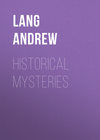










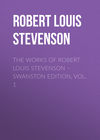
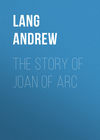
![XXXII Ballades in Blue China [1885]](https://cdn.litres.ru/pub/c/cover_100/25230660.jpg)
